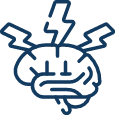Great Sleep Changes Everything
At Sleep Metrics, we understand sleep’s crucial role in maintaining overall wellness. We’ve been devoted to enhancing sleep health for over a decade!
We believe that getting proper sleep support should be easy and accessible.
You’re in the right place if you’re looking for a provider with YOUR best interest at heart.
To us, you’re not just a client—you’re a member of our family.
We strive to provide superior quality products and care, making us the preferred choice for sleep testing and CPAP therapy.
You’re MORE than just a client.

Personalized
Care

Continuous
Support

Easy Access to
Supplies

Experienced
Specialists
Let’s get you sleeping better
Always Feeling Tired and Lethargic?
If you have trouble sleeping, snore excessively, or feel sleepy in the afternoon
you could have obstructive sleep apnea (OSA).
Every year, millions of people are diagnosed with OSA.
Untreated OSA can result in

Weight gain

Diabetes

Hypertension

Heart Disease

Memory Issues

Stroke
But getting tested in a lab isn’t always ideal: sleeping in a strange bed, being wired up, and being watched all night can be extremely off-putting.
At Sleep Metrics, we offer at-home diagnostics to determine if you require CPAP treatment.
Your sleep is our #1 priority.
Benefits of CPAP Therapy

Reduce Stress & Improve Mood

Snoring Reduction or Elimination

Improved Breathing During Sleep

Treat & Prevent Sleep Apnea

Lower Risk of Stroke, High Blood Pressure & Heart Attack

Management of Respiratory Disorders

Increased Energy & Concentration

Reduced Restless Sleep & Sleep Fragmentation
Put Sleep Apnea To Bed With CPAP
If you suspect that you have sleep apnea, take the quiz below.
You’ll also find out if you qualify for CPAP
How Does It All Work?


Take a quick quiz & find out if you qualify for CPAP


We’ll contact you & begin the process of obtaining authorization from your insurance.


Your test will be delivered by mail. Save the box so you can use it to send the test back,


Sleep while wearing the device for two nights. Return the unit in the same box.


Our board certified sleep doctor will send a report to your provider with treatment recommendations and options


Your physician will contact you. If you’re diagnosed with OSA it’s important that you seek treatment
What our patients are saying

FAQ
Yes, a referral from a healthcare practitioner is required to undergo a Home Sleep Test (HST). You can simply call your doctor and request them to fax us a referral. Alternatively, we can assist you by faxing our referral form to your provider. For further assistance, you can reach out to us directly at 855-70-Sleep during our operating hours, Monday to Friday, 8:30 am to 5:30 pm PT.
If you don’t have a doctor, you can visit an immediate care provider like Zoomcare. Simply provide them with our sleep-study slip HERE to initiate the process.
The cost of a home sleep test is primarily determined by your insurance plan. While we will check your coverage as a first step, we have set a maximum patient out-of-pocket cost of $399 for the HST (Home Sleep Test). However, it is highly likely that you will pay significantly less compared to a test in a lab setting. On average, a lab-based polysomnography costs $3,500, while a Home Sleep Test typically amounts to $800, as billed to your insurance.
Sleep Metrics is likely to be in-network with most commercial insurance plans. Here is a list of contracted providers:
Home sleep test
Our Home Sleep Test is specifically designed for patients exhibiting symptoms of Obstructive Sleep Apnea (OSA). While there are other sleep disorders, OSA is one of the most common ones we focus on. We assess for symptoms such as loud snoring, witnessed pauses in breathing while asleep, excessive daytime sleepiness, morning headaches, dry mouth upon waking, a history of high blood pressure, memory problems, depression, acid reflux, diabetes, difficulty concentrating, personality changes, irritability, and erectile dysfunction. To determine your risk, you can take our Sleep Quiz on our website, which provides a highly accurate assessment of your condition.
Our Home Sleep Test involves a small device worn around your neck and secured with elastic belts around your chest and waist. Additionally, there is a sensor attached to your fingertip and a nasal cannula for your nose. While it may not be the most comfortable experience for a couple of nights, it is necessary for accurate diagnosis and treatment.
The difference between a home sleep test and a sleep test performed in a lab is that the home sleep test offers a convenient and specific method to identify obstructive sleep apnea (OSA). It records vital data such as heart rate, pulse, blood-oxygen level, breathing effort, airflow, and snoring. On the other hand, a lab test, known as polysomnography, captures a more comprehensive set of data including brainwave activity, limb movement, and muscle activity. In-lab studies are used to diagnose various sleep disorders.
AHI represents the number of apneas or hypopneas recorded per hour of sleep. In a home sleep test, it measures the frequency of breathing pauses or blockages.
The severity of OSA is determined based on the “number of events per hour” as follows:
- Normal sleep test: AHI < 5 per hour
- Mild: AHI 5-14.9 per hour
- Moderate: AHI 15-29.9 per hour
- Severe: AHI ≥ 30 per hour
If a part of the home sleep test comes off during the night, there’s no need to worry! Simply reattach any loose parts and go back to sleep. The test requires one night’s worth of data for an accurate diagnosis, but you have the option of two nights to ensure reliable results.
You can sleep on your side while using the home sleep test or any position you find comfortable as long as the chest belt remains snug. If the chest light is green, everything is functioning properly.
Insomnia may impact your sleep quality, but the home sleep test can still provide valuable information about your breathing patterns during sleep. It is important to consult with your healthcare provider to interpret the results accurately.
If you encounter any difficulties during the test, please wait until we’re available to answer your questions. This may be an important test, but we certainly don’t want you losing any sleep over it.
The home sleep test is designed with your comfort in mind. It involves wearing a small gadget with a soft elastic belt around your chest, along with a nasal device and a sensor on your finger. While it may not be luxurious accommodations, it is a short-term inconvenience for long-term sleep improvement. To learn more about how the device works, watch this informative video:
If you need to use the bathroom while undergoing the test, you can leave the device turned on and refrain from removing any leads. The recording can continue while you use the bathroom. If you need to use your hands, simply remove the sensor from your finger temporarily and reattach it when you are finished. Don’t forget to put the finger sensor back on afterward.
Your results will be sent to the healthcare provider who prescribed the test within two business days after we receive the testing unit from you. If the results indicate Obstructive Sleep Apnea, we will also provide a prescription for the recommended therapy along with the results. This expedites the process of getting you the appropriate treatment. Your healthcare provider will follow up with you to discuss the results and determine the best treatment option for your specific case.
Several therapy options are available for addressing Obstructive Sleep Apnea (OSA), including:
- Continuous Positive Airway Pressure (CPAP): This is the gold standard therapy and typically the first-line treatment for OSA. CPAP involves a mask that delivers a constant flow of air, ensuring your airway remains open and providing a continuous supply of oxygen.
- Oral Appliance Therapy (OAT): OAT has made significant advancements and is a viable option for patients with mild to moderate OSA. It involves custom-made devices created by dentists specialized in Sleep Therapy. These devices reposition your jaw to keep the airway unobstructed and reduce snoring.
- Positional Therapy: Based on your test results, we can determine the position in which your OSA is most severe. Positional Therapy helps keep you off your back during sleep, which can be effective when combined with other treatment forms.
Surgery: Surgery is the most invasive option and should be discussed with an Ear Nose Throat doctor or Otolaryngologist. It is typically considered a last resort.
If left untreated, Obstructive Sleep Apnea (OSA) can lead to various consequences, including daytime sleepiness and fatigue, cognitive impairment, poor job performance, anxiety, depression, memory loss, dementia, hypertension, cardiac disease, and stroke. Seeking appropriate treatment is essential to mitigate these risks and improve overall health and well-being.
CPAP Therapy
It’s common to need some time to adjust to using a CPAP machine. If you initially feel uncomfortable, claustrophobic, or have concerns about the air pressure, don’t worry. Give it about two weeks, and you’ll likely start feeling more accustomed to it. To ease the transition, try these tips: Wear the CPAP while watching TV to help your body adapt gradually. You can also aim to increase the duration of CPAP usage each night over time. Some machines offer a “ramp” feature that starts with low air pressure and gradually increases to the prescribed setting as you fall asleep. In case these strategies don’t work, consult your doctor who may recommend alternative devices like a bi-level positive airway pressure (BiPAP) machine with automatic pressure adjustments.
If you wake up with a stuffy nose or dry mouth due to CPAP pressure, a heated humidifier that attaches to the CPAP machine can be beneficial. It helps add moisture to the air you breathe, reducing nasal discomfort. For those who tend to breathe through their mouth, waking up with dry mouth can be addressed by using a chin strap or considering a full-face mask that covers both the nose and mouth.
It’s not uncommon to unintentionally remove your CPAP mask during sleep, especially if you move a lot. To address this, try using a full-face mask or a chin strap, as they provide better stability and help keep the mask in place. If discomfort due to nasal congestion is causing you to remove the mask, a CPAP-heated humidifier can alleviate congestion and enhance comfort.
Gone are the days of noisy CPAP machines. Modern CPAP machines are designed to operate quietly. If you find the machine noise bothersome, consider using earplugs. However, if you notice excessive noise, it may indicate a problem with the machine. Check and clean the filters regularly according to the recommended schedule. If you’re using a BiPAP machine, there may be a slight audible noise during pressure transitions, while an AutoCPAP machine may produce a slight sound when adjusting the inhalation pressure. If you suspect a defect, contact the manufacturer for further assistance. It’s worth noting that some masks have better air-diffusion features than others, so trying different masks can help find the most suitable one for you.
Absolutely! Your CPAP machine is portable and comes with a carrying case, making it convenient to travel with. When flying, the CPAP machine is considered a medical device and is allowed in addition to your personal item or carry-on luggage. For camping trips, battery packs and adaptors are available, enabling you to power your CPAP machine using your vehicle. Enjoy your camping adventures without compromising your sleep therapy.



